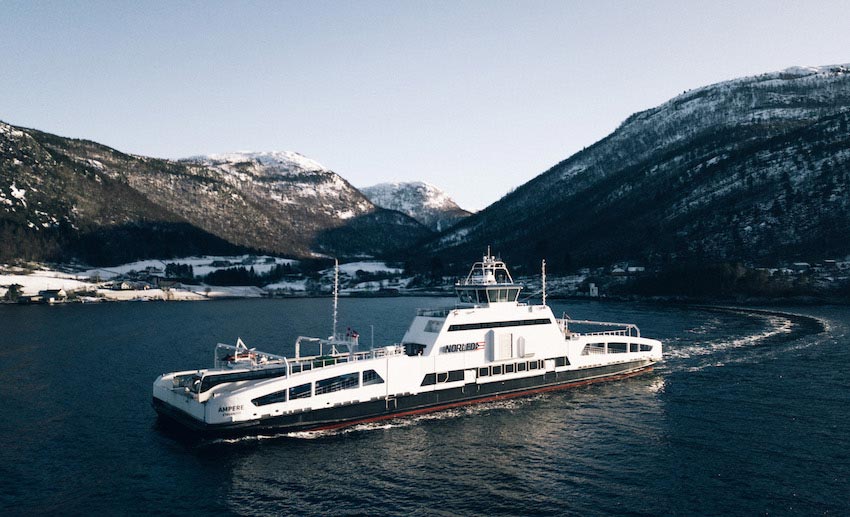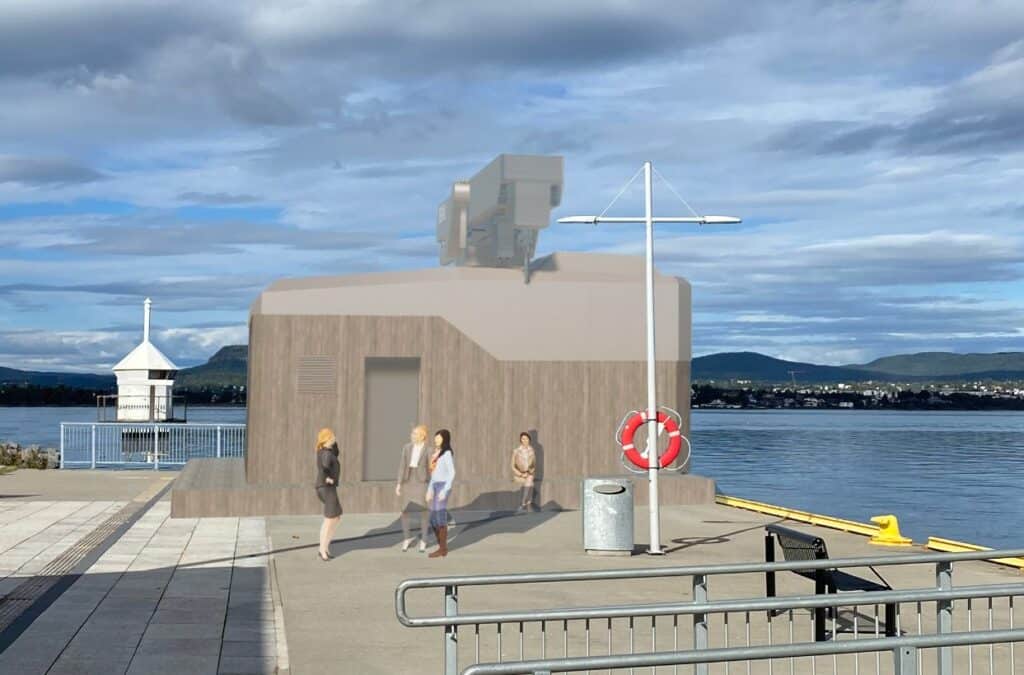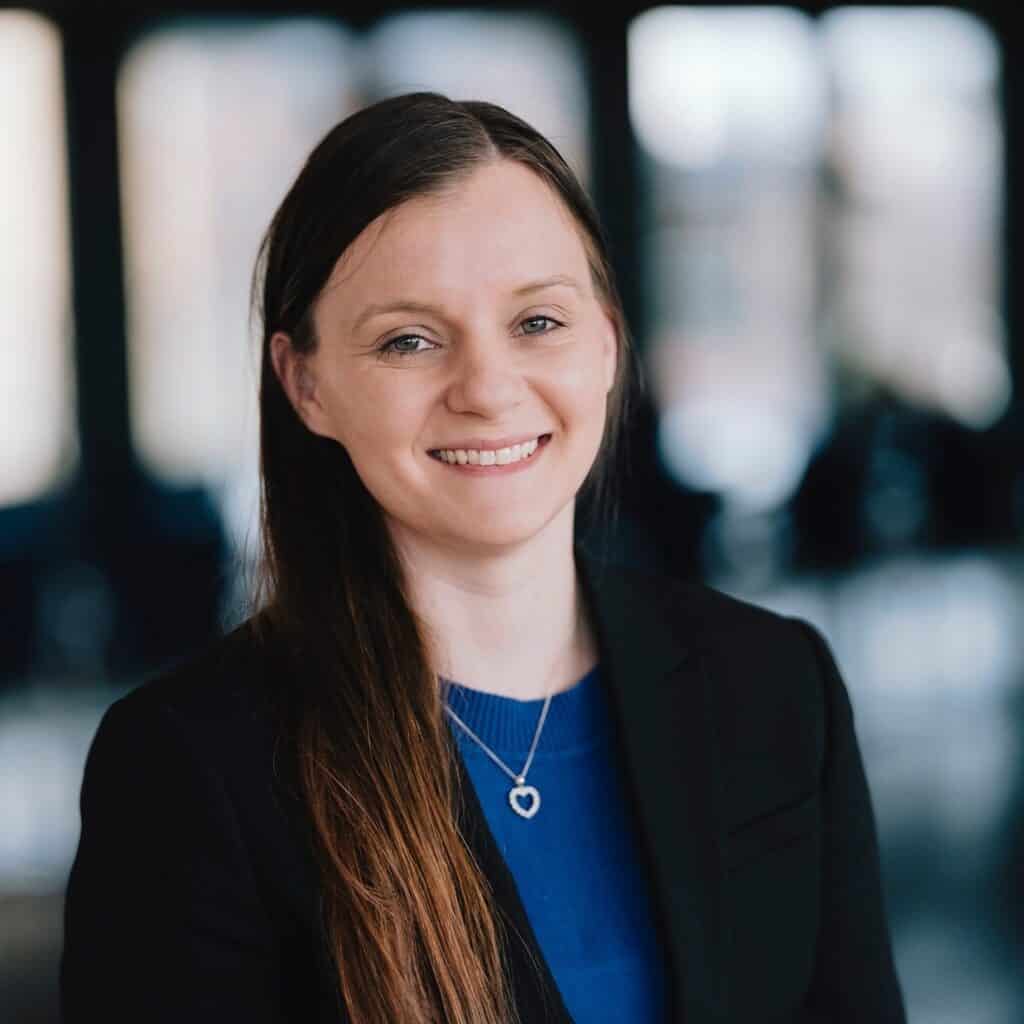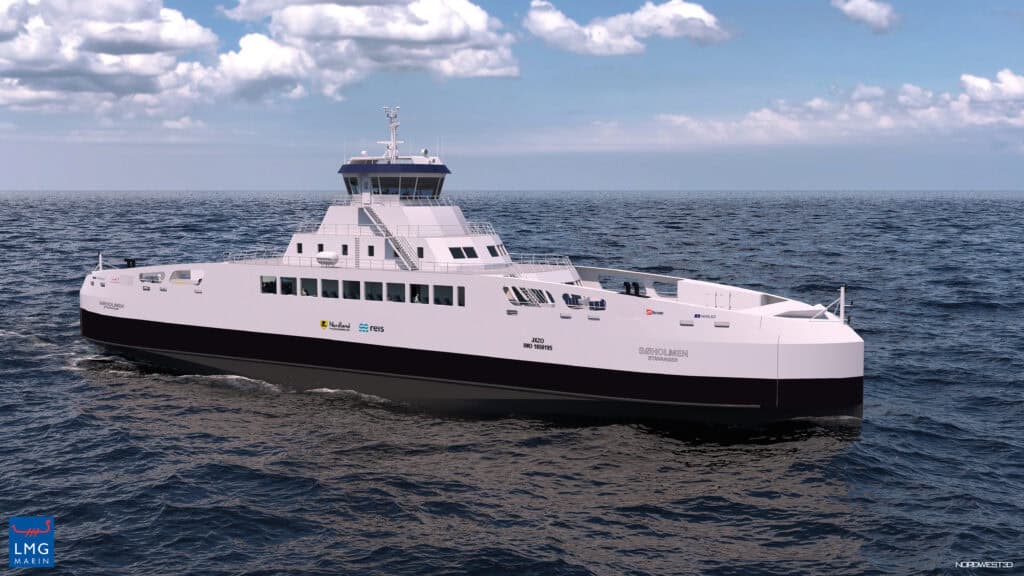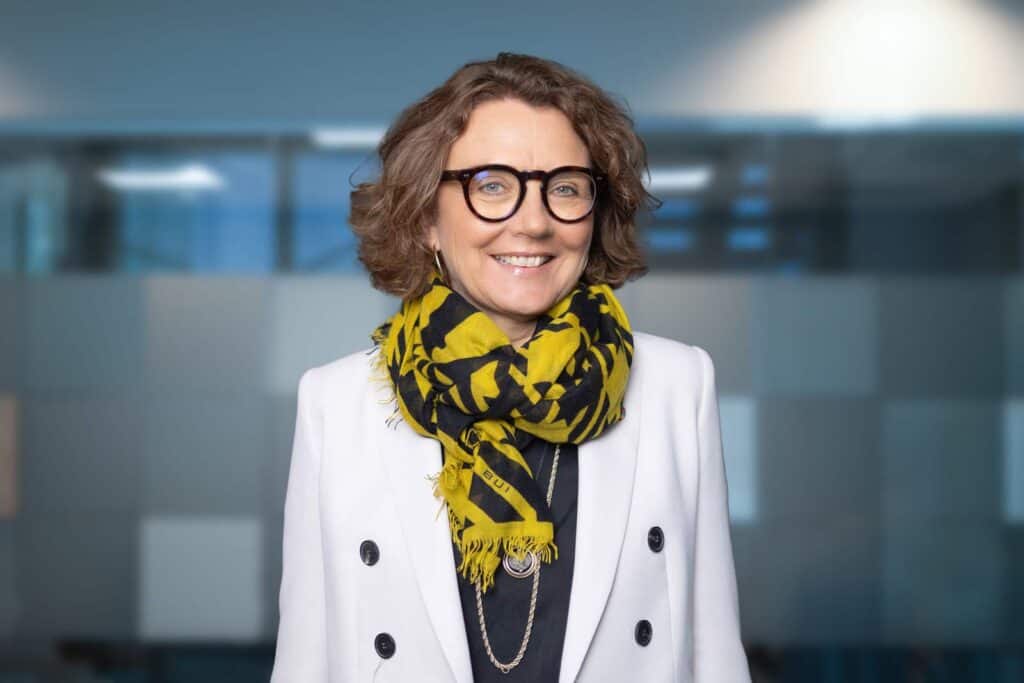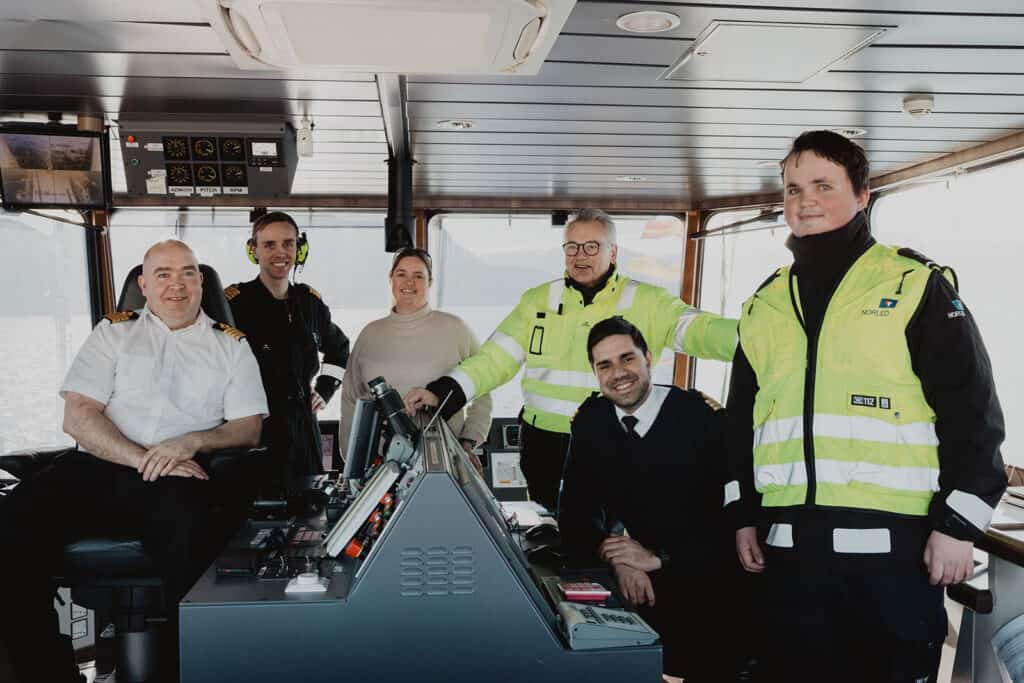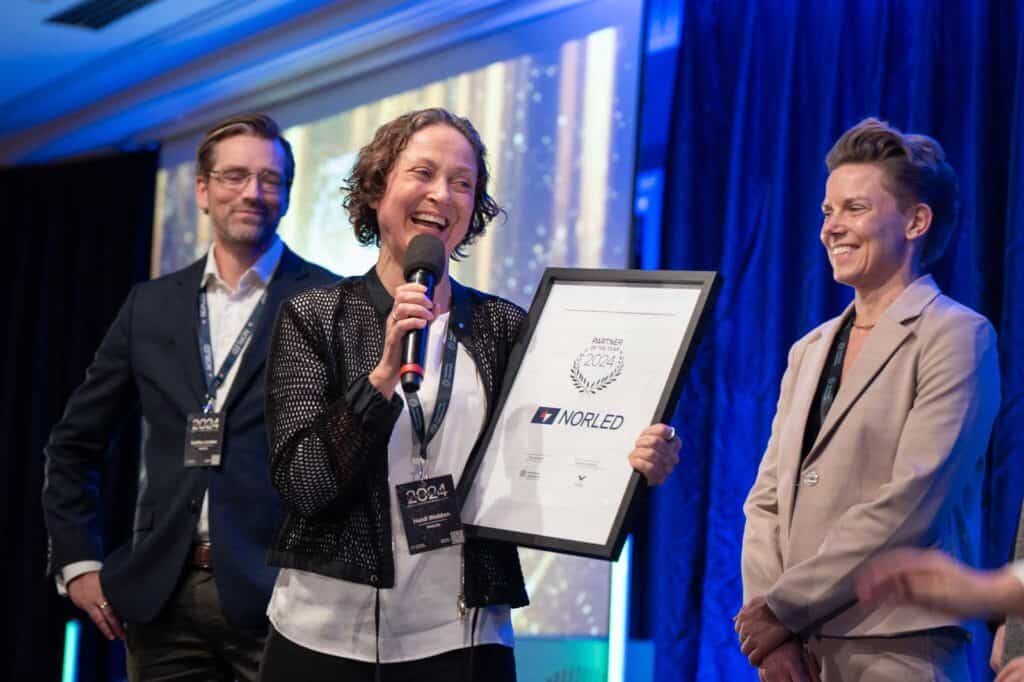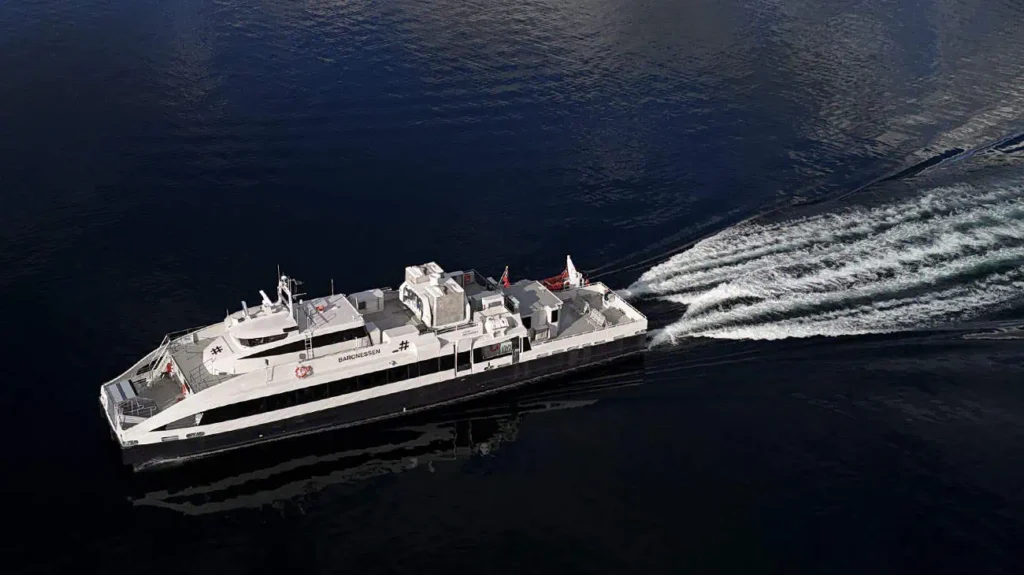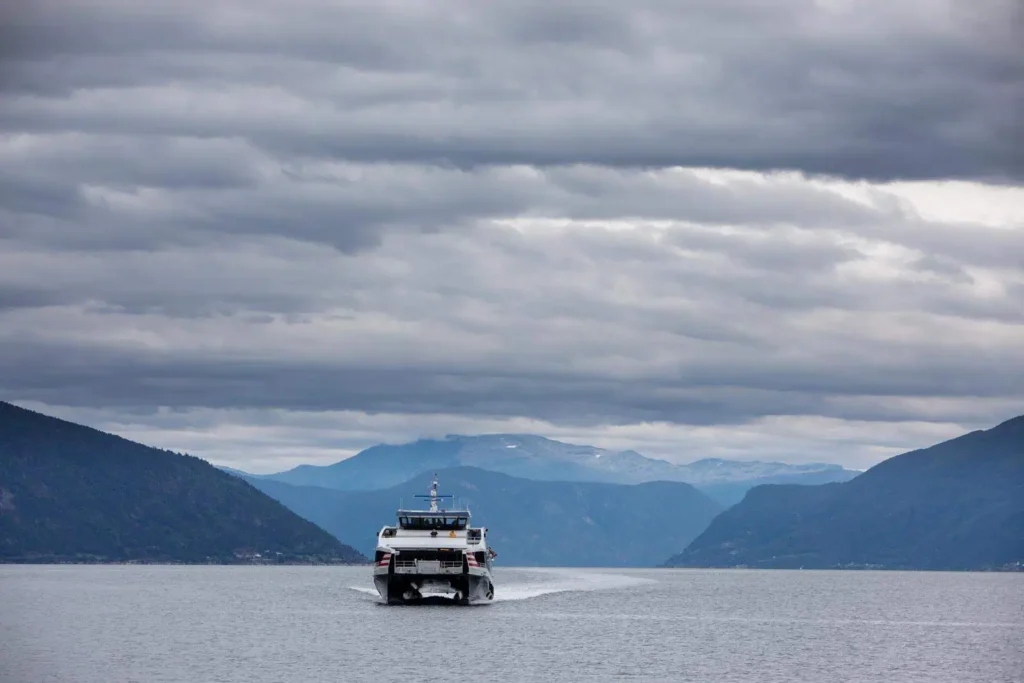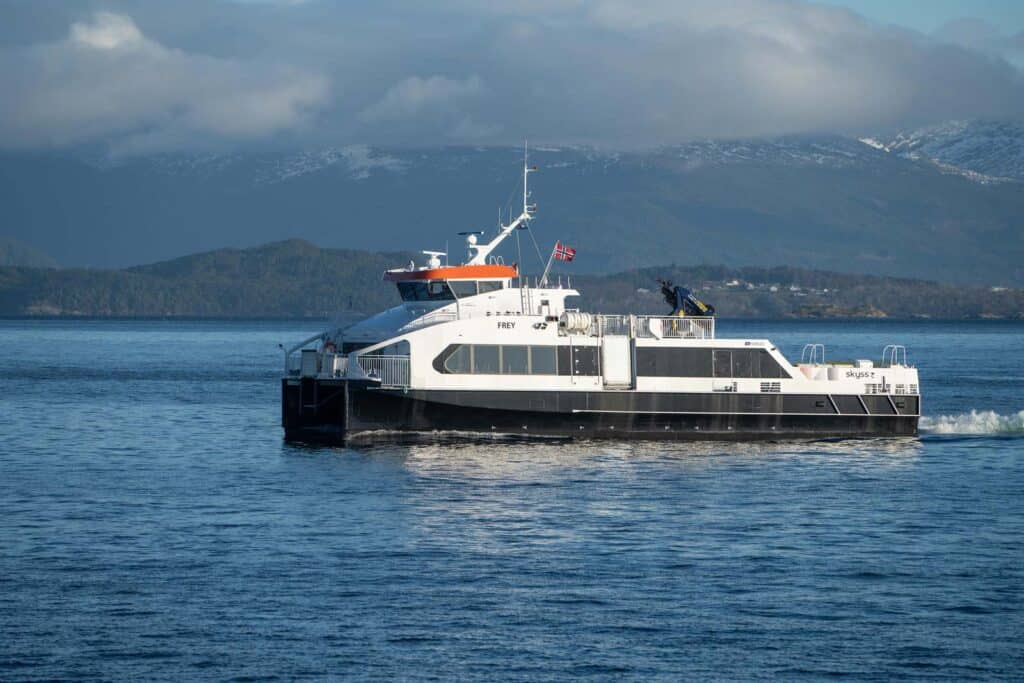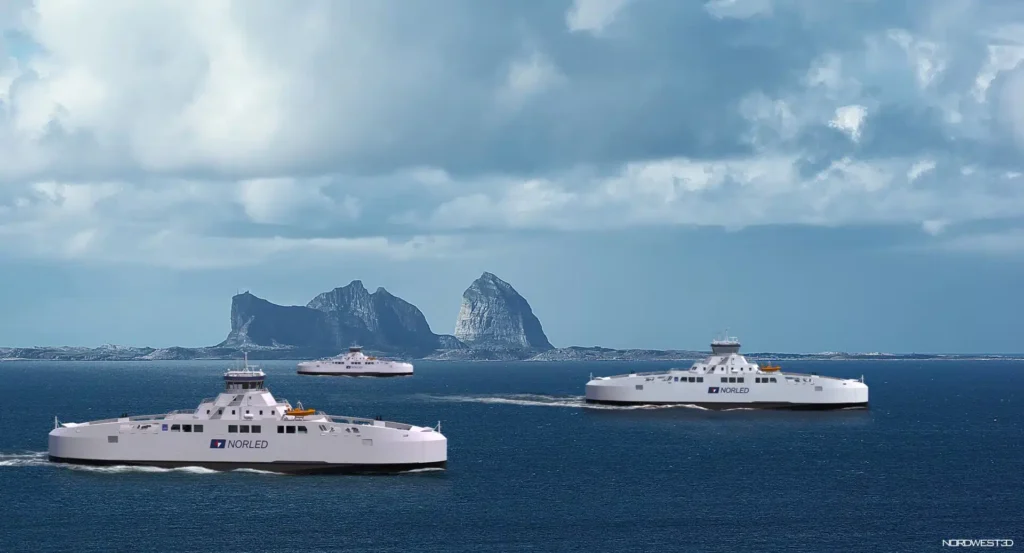Press release: Norwegian maritime milestone:
The battery ferry MF “Ampere” operates daily between Lavik and Oppdal on the Sognefjord.
- When we built and launched “Ampere”, Norled, together with the Fjellstrand shipyard in Hardanger, was unique of its kind and “Ampere” was a world sensation. Succeeding with a green ferry alternative has had a positive ripple effect, and we are both happy and proud to see that the development and use of battery ferries has become very central to the political management and debate on the green shift,” says Løyning.
MF “Ampere” is an all-electric ferry. However, if the ferry had run on diesel, it would have used around 3 million liters of diesel on the same route, which would have resulted in emissions equivalent to almost 8,100 tons of CO2.
Fjellstrand in Hardanger built the world’s first battery car ferry with conventional propulsion, MF “Ampere”. There are now several dozen electric ferries on order. Experience with “Ampere” shows that fuel costs with an electric ferry are significantly lower than with a conventional ferry.
- This proves that it pays to invest in green technology – both for the environment and for your wallet. Of course, there are some initial costs that need to be taken into account, but over time we see that green technology is good business,” says Løyning.
He praises the Norwegian Public Roads Administration for launching a tender competition to encourage innovation and a development ferry.
- The result was “Ampere”, which in our view became the Norwegian environmental showcase for innovative ferry design that the Norwegian Public Roads Administration wanted,” says Løyning.
Good regularity
“Ampere” has 34 daily departures on weekdays and has a capacity of up to 120 cars and 350 passengers on board.
- As “Ampere” was the first green ferry out, we have of course experienced some teething problems. That’s why it’s very gratifying that regularity so far in 2018 has been at a high 98.7%, where the deviations are due to a combination of both weather and wind as well as some technical challenges,” says Løyning.
Enormous international interest
MF “Ampere” has received considerable publicity and been noticed far beyond Norway’s borders.
- “We believe this is the start of the story where the green shift will lead to a renaissance for the Norwegian maritime sector. If the industry uses this technological advantage and showcase correctly, we believe that this can help Norwegian shipyards succeed in the transition after the oil age,” says Løyning.
At the same time, he adds that the biggest challenge for Norwegian decision-makers is that the eagerness to switch to environmentally friendly solutions becomes so great that all investment funds are channeled into a single technological solution.
- “Technological development is moving very fast, and our concern is first and foremost that the authorities, who set requirements for shipping companies, go for solutions where all funds are locked into 2018 technology. We then run the risk that the industry will be outdated within a few years.
- “Our experience with ‘Ampere’ also shows that it is extremely important that the authorities have a willingness to cooperate, good insight and understanding of the challenges electrification means for energy supply, adjusted infrastructure, open innovation and the debate on ownership,” says Løyning.
For more information contact:
Marianne Frønsdal, Director of Communications at Norled by phone: 95 12 93 83
